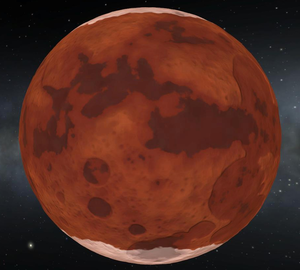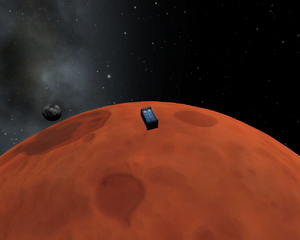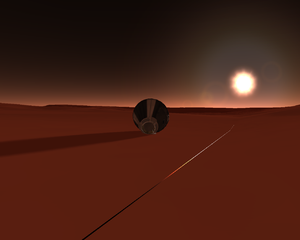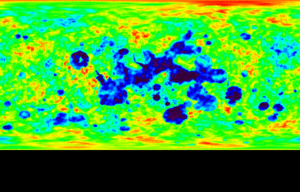Difference between revisions of "Duna"
(→Characteristics) |
(→Characteristics) |
||
| Line 13: | Line 13: | ||
*[http://en.wikipedia.org/wiki/Density Density]: | *[http://en.wikipedia.org/wiki/Density Density]: | ||
| − | *[http://en.wikipedia.org/wiki/Volume Volume]: 137 | + | *[http://en.wikipedia.org/wiki/Volume Volume]: 137.258277e^15m^3 |
*[http://en.wikipedia.org/wiki/Surface_gravity Surface Gravity]: ~2.94m/s² | *[http://en.wikipedia.org/wiki/Surface_gravity Surface Gravity]: ~2.94m/s² | ||
Revision as of 05:19, 21 September 2012
Duna is the fourth planet of the Kerbolar star system. It is the Mars analog for Kerbal Space Program and is mostly red with polar icecaps.
Contents
Characteristics
- Equatorial Radius: 320km
- Mass: 4.5149569e21kg
- Volume: 137.258277e^15m^3
- Surface Gravity: ~2.94m/s²
- Gravitational parameter: 301.321km³/s²
- Escape velocity from surface: 1372.3m/s
- Sidereal Rotation Period: ... hours; Rotation: ... degrees per hour, or ... m/s at the equator
- Solar Day: 18 hours, 3 minutes, 11 seconds.
- Synchronous Orbit altitude: ... km; Stationary Orbit velocity: ... m/s
Orbital Characteristics
- Semi-Major Axis: 20,726,194.5km or ... Astronomical Units (A.U.)
- Velocity: ~7530.65 m/s (average determined by velocity at Apobol and velocity at Peribol.)
- Argument of Periapsis: ...°
- Mean Anomaly at Epoch UT = ...
- Orbital Period: 4,809.6 hours, or 200.4 Earth days
- Sphere of influence: 47,921 km
Topography
Duna is a iron-rich planet which has greatly varying land altitude, the consequence of which is very difficult judgment of a safe landing position. Its mountainous ranges are a peril to landing craft, especially considering the thin atmosphere, where very little aerobraking can be done safely. It is important to slow one's ship down before coming into the atmosphere, to ensure a safe decent. Its two poles are very expansive and are the result of a thin atmosphere.
Atmosphere
Duna's atmosphere begins at approximately 41km. Parachutes work with a slightly low efficiency, making powered descent a required step of landing on the surface from orbit.
Natural Satellites
Duna's only natural satellite is the moon Ike.



